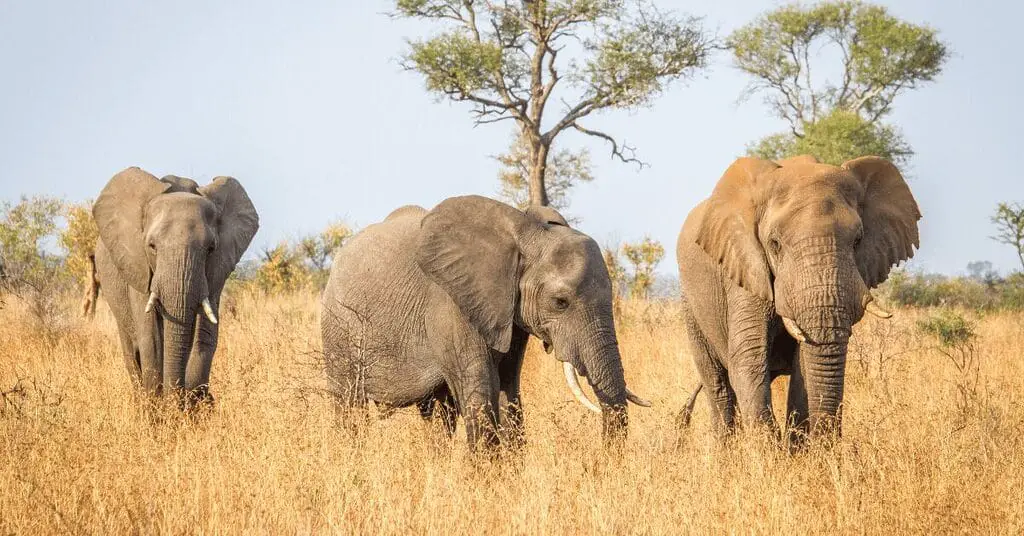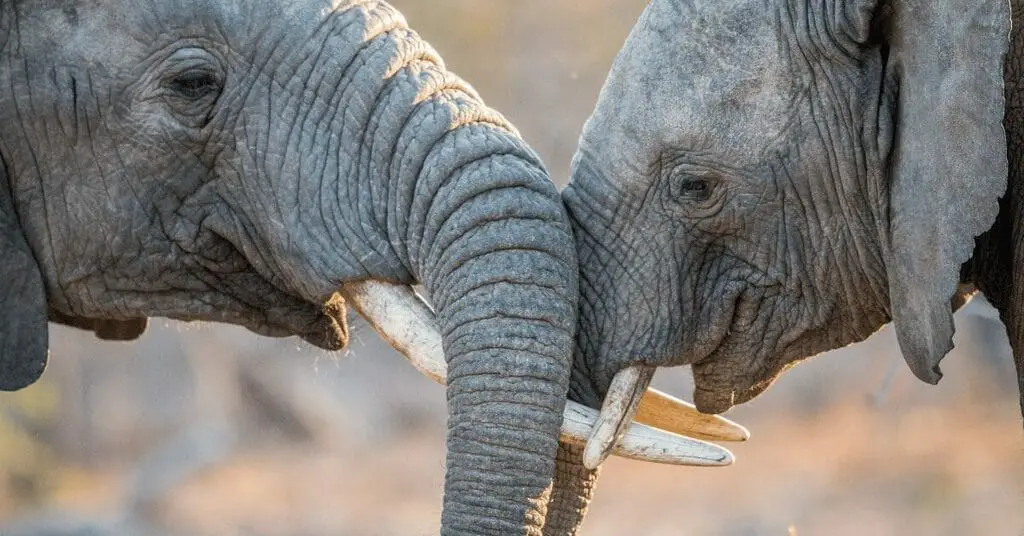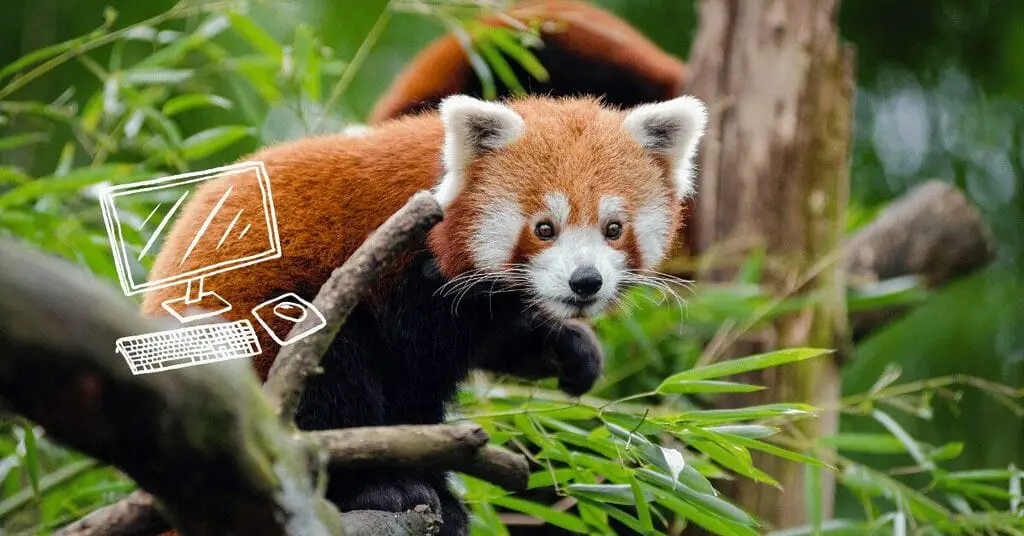Wildlife conservation is a critical issue that affects us all. As human activities continue to put pressure on natural habitats and wildlife populations, the need for effective conservation efforts has never been greater. However, the world of wildlife conservation is complex and multifaceted, presenting a range of challenges and opportunities.
From habitat loss and poaching to climate change and human-wildlife conflicts, conservationists face numerous obstacles in their efforts to protect and preserve wildlife.
At the same time, there are countless individuals, organizations, and communities working hard to make a difference, through innovative strategies, collaborative initiatives, and grassroots actions.
In this comprehensive guide, we’ll explore the intriguing and complex world of wildlife conservation. We’ll delve into the challenges, highlight the efforts being made, and identify the opportunities for individuals as well as society to contribute to this critical cause.
The Goals and Importance of Wildlife Conservation
Wildlife conservation can be defined as the practice of protecting wild species and their habitats to ensure their survival and maintain ecological balance. The main objectives of conservation efforts are to prevent the extinction of species, preserve biodiversity, and maintain healthy ecosystems.
The significance of protecting biodiversity and ecosystems cannot be overstated. Biodiversity refers to the variety of life on Earth, including the diversity of species, genes, and ecosystems. Each species plays a unique role in its ecosystem, and the loss of even a single species can have far-reaching consequences.
Healthy ecosystems provide essential services, such as clean air and water, pollination, and nutrient cycling, which are vital for the survival of all life on Earth, including humans.
Moreover, preserving wildlife and their habitats has economic, social, and cultural benefits. Many communities around the world depend on wildlife for their livelihoods, through activities such as eco-tourism, sustainable hunting, and fishing.
Wildlife also holds significant cultural and spiritual value for many people, and the loss of iconic species can have a profound impact on human well-being.
In short, wildlife conservation is not just about protecting animals and plants; it’s about ensuring the health and resilience of our planet and the well-being of all its inhabitants.
Challenges in Wildlife Conservation

Despite the critical importance of wildlife conservation, the field is faced with numerous challenges that hinder the effectiveness of conservation efforts. One of the most significant challenges is wildlife trafficking and poaching.
Illegal hunting and trade of wildlife products, such as ivory, rhino horn, and tiger parts, are driving many species to the brink of extinction. Poachers often target endangered species for their high value on the black market, making it difficult for conservationists to protect them.
Habitat loss and fragmentation pose another major threat to wildlife. As human populations expand and natural habitats are converted for agriculture, urbanization, and infrastructure development, wildlife is left with increasingly smaller and more isolated patches of habitat.
This makes it harder for species to find food, mates, and shelter, and increases their vulnerability to other threats, such as disease and inbreeding.
Climate change is also having a significant impact on wildlife. Rising temperatures, changing precipitation patterns, and more frequent extreme weather events are altering the distribution and behavior of many species.
Some species may be forced to shift their ranges to find suitable conditions, while others may face extinction if they are unable to adapt quickly enough.
Human-wildlife conflicts are another challenge, particularly in areas where human populations live in close proximity to wildlife.
Conflicts can arise when animals raid crops, prey on livestock, or pose a threat to human safety. In some cases, these conflicts can lead to retaliatory killings of wildlife, further exacerbating conservation challenges.
Furthermore, conservation challenges can vary significantly by region. In countries like Ethiopia and Tanzania, for example, rapid population growth, poverty, and political instability can exacerbate threats to wildlife and make conservation efforts more difficult.
Addressing these challenges requires a deep understanding of local contexts and a willingness to work closely with local communities and stakeholders.
Wildlife Conservation Efforts and Strategies
Fortunately, there are numerous wildlife conservation efforts and strategies being implemented at global, regional, and local levels to address the challenges facing wildlife.
Global conservation initiatives, such as the Convention on International Trade in Endangered Species (CITES) and the International Union for Conservation of Nature (IUCN), provide frameworks for international cooperation and coordination in wildlife conservation.
Regional and country-specific efforts are also critical. In Africa, for example, many countries are working together to combat poaching and protect iconic species like elephants and rhinos.
In India, the government has implemented various conservation schemes, such as Project Tiger and Project Elephant, to protect threatened species and their habitats.
In North America, the North American Wildlife Conservation Model has been successful in managing and conserving wildlife populations through a combination of regulated hunting, habitat protection, and scientific research.
Government agencies, such as the Florida Fish and Wildlife Conservation Commission, play a crucial role in implementing and enforcing conservation policies and regulations.
Non-governmental organizations (NGOs) and conservation groups also make significant contributions to wildlife conservation efforts. These organizations work on a range of issues, from protecting endangered species and their habitats to combating wildlife trafficking and promoting sustainable development.
Combating wildlife trafficking requires a multi-faceted approach, including strengthening law enforcement, reducing demand for illegal wildlife products, and providing alternative livelihoods for communities that depend on poaching.
Habitat protection and restoration are also essential, as they help to maintain the ecological integrity of landscapes and provide wildlife with the space and resources they need to thrive.
Community-based conservation approaches, which involve working closely with local communities to develop sustainable wildlife management practices, are increasingly being recognized as a key strategy for conservation success.
By empowering communities to be stewards of their natural resources, these approaches can help to balance the needs of both people and wildlife. Overall, the diversity and scope of wildlife conservation efforts and strategies reflect the complexity of the challenges facing wildlife and the urgent need for action at all levels of society.
Supporting Wildlife Conservation

While governments, organizations, and conservation professionals lead the charge in protecting wildlife, the support and engagement of individuals and communities are essential for the success of conservation efforts.
One of the most effective ways to contribute to wildlife conservation is by supporting reputable wildlife conservation charities and organizations.
These organizations rely on donations and grants to fund their critical work, and every contribution, no matter the size, can make a difference. Some wildlife conservation charities worth considering include the World Wildlife Fund (WWF), the Wildlife Conservation Society (WCS), and the African Wildlife Foundation (AWF).
Volunteering is another excellent way to support wildlife conservation efforts. Many conservation organizations, such as the Southwest Wildlife Conservation Center in Arizona, offer volunteer opportunities that allow individuals to contribute their time and skills to help protect and care for wildlife.
Volunteers can assist with a range of tasks, from habitat restoration and animal care to research and education programs. Individual actions can also have a significant impact on wildlife conservation.
By making environmentally conscious choices, such as reducing plastic use, supporting sustainable products, and minimizing our carbon footprint, we can help to reduce the pressure on wildlife and their habitats.
Additionally, individuals can advocate for wildlife conservation by contacting their elected officials, signing petitions, and spreading awareness about conservation issues on social media and in their communities.
Education and awareness play a crucial role in building support for wildlife conservation. By educating people about the importance of wildlife, the threats they face, and the actions they can take to help, we can inspire more individuals to become advocates for conservation.
The Economics of Wildlife Conservation
While the natural value of wildlife and the moral responsibility to protect it are compelling reasons for conservation, it’s also important to consider the economic dimensions of wildlife conservation.
Conservation efforts require significant financial resources, and securing adequate funding is often a major challenge.
Governments, NGOs, and private donors are the primary funding sources for conservation initiatives. Governments can allocate funds through their budgets, while NGOs rely on donations, grants, and partnerships with businesses and foundations.
Private donors, including individuals and corporations, can also make significant contributions to conservation efforts. It’s important to recognize that wildlife conservation can generate substantial economic benefits. Eco-tourism, for example, is a growing industry that relies on the presence of healthy wildlife populations and habitats.
Wildlife conservation can also support other economic activities, such as sustainable agriculture, forestry, and fisheries. By maintaining healthy ecosystems and the services they provide, conservation efforts can help to ensure the long-term viability of these industries.
However, balancing economic development and conservation goals can be a challenge. In many cases, short-term economic interests, such as resource extraction or land conversion, may conflict with long-term conservation objectives.
Finding ways to reconcile these competing priorities is a key challenge for policymakers and conservation practitioners. One approach is to promote sustainable development practices that integrate conservation goals.
For example, encouraging eco-friendly tourism, supporting sustainable resource management, and providing incentives for conservation-friendly land use practices can help to align economic and conservation interests.
Ultimately, recognizing the economic dimensions of wildlife conservation can help to build support for conservation efforts and ensure their long-term sustainability.
Conservation vs. Preservation
When discussing wildlife protection, it’s important to understand the distinction between conservation and preservation. While these terms are often used as synonyms, they represent different approaches to protecting wildlife and their habitats.
Conservation refers to the sustainable use and management of natural resources, with the goal of maintaining their long-term viability.
This approach recognizes that humans can use natural resources, but in a way that doesn’t compromise the health and integrity of ecosystems. Conservation often involves active management practices, such as regulated hunting, habitat restoration, and population monitoring.
Preservation, on the other hand, emphasizes the protection of wildlife and their habitats in their natural state, with minimal human intervention.
This approach seeks to maintain the integrity of ecosystems and the species that depend on them, often by setting aside protected areas and restricting human activities. Preservation is based on the belief that nature has intrinsic value and that humans have an ethical obligation to protect it.
While conservation and preservation represent different approaches, both are important in protecting wildlife and their habitats.
Conservation can help to ensure the long-term sustainability of natural resources and support human activities that depend on them, such as eco-tourism and sustainable resource extraction.
Preservation, meanwhile, can help to protect the most vulnerable and irreplaceable ecosystems and species, ensuring their survival for future generations.
By combining these approaches, we can work towards a more comprehensive and effective strategy for protecting wildlife and their habitats.
Historical Perspective on Wildlife Conservation

To fully appreciate the current state of wildlife conservation, it’s helpful to look back at the historical context and evolution of conservation efforts. Throughout history, key figures have played pivotal roles in shaping the conservation movement.
One of the most notable figures in American conservation history is Theodore Roosevelt, who established numerous national parks, forests, and wildlife refuges during his presidency in the early 20th century. Roosevelt’s legacy helped to lay the foundation for modern conservation efforts in the United States.
Other important figures in conservation history include John Muir, who advocated for the protection of wilderness areas and helped to establish the National Park System, and Aldo Leopold, who developed the concept of land ethic and promoted a more holistic approach to conservation.
Milestones and important events have also shaped the course of conservation history. The establishment of Yellowstone National Park in 1872, for example, marked the beginning of the national park system in the United States.
The signing of the Endangered Species Act in 1973 was another significant milestone, providing legal protections for threatened and endangered species and their habitats.
Over time, conservation approaches and strategies have evolved in response to changing environmental, social, and political contexts. Early conservation efforts often focused on protecting scenic areas and charismatic species, such as bison and elk.
As scientific understanding of ecology and ecosystems grew, conservation efforts began to take a more holistic approach, recognizing the importance of protecting entire landscapes and the complex web of interactions between species.
Wildlife Conservation in Practice
Moving from the historical perspective to the practical application of conservation efforts, let’s explore some examples of conservation in action. Conservation centers and wildlife areas play a crucial role in protecting and preserving species and their habitats.
The Alaska Wildlife Conservation Center, for instance, is dedicated to preserving Alaska’s wildlife through conservation, education, and quality animal care. The center provides a sanctuary for injured, orphaned, and endangered animals, and offers visitors the opportunity to learn about and appreciate Alaska’s unique wildlife.
Another example is the Meadowlands Conservation and Wildlife Area in New Jersey, which protects over 8,400 acres of wetlands, grasslands, and forests. The area provides critical habitat for a wide range of species, including migratory birds, fish, and mammals, and offers recreational opportunities such as hiking, birdwatching, and fishing.
Wildlife conservation officers, also known as game wardens or park rangers, are on the front lines of conservation efforts. These professionals are responsible for enforcing wildlife laws, protecting habitats, and educating the public about conservation.
They may patrol protected areas, monitor wildlife populations, investigate poaching and other illegal activities, and assist with research and management efforts.
Success stories and lessons learned from conservation efforts can provide valuable insights and inspiration for future initiatives. For example, the recovery of the bald eagle in the United States is a remarkable success story.
Through a combination of legal protections, habitat conservation, and banning of harmful pesticides like DDT, bald eagle populations have rebounded from near extinction to thriving numbers.
Another success story is the establishment of the Gorongosa National Park in Mozambique, which has been rehabilitated after years of civil war and poaching. Through a partnership between the government and a non-profit organization, the park has been restored and now serves as a model for conservation and sustainable development in Africa.
Lessons learned from conservation efforts include the importance of community involvement, the need for long-term funding and political support, and the value of adaptive management approaches that allow for flexibility in the face of changing conditions.
Conclusion
The world of wildlife conservation is a complex and multifaceted one, filled with both challenges and opportunities. From the tragic impacts of poaching and habitat loss to the inspiring efforts of dedicated individuals and organizations, the stories and experiences shared in this guide highlight the urgency and importance of protecting our planet’s precious wildlife.
We’ve explored the key goals and principles of conservation, the major threats facing wildlife today, and the diverse range of strategies and approaches being used to address these challenges.
We’ve also examined the economic, social, and cultural dimensions of conservation, and the critical role that individuals and communities can play in supporting and advancing conservation efforts.
As we look to the future, it’s clear that the road ahead will not be easy. The pressures facing wildlife and their habitats are only growing, and the need for effective, coordinated action has never been greater. But there is also reason for hope.
With the help of new technologies, innovative partnerships, and the passion and commitment of people around the world, we have the power to make a real difference. By working together, across borders and across sectors, we can build a future in which wildlife and their habitats are valued, protected, and thriving.
